Several factors can cause the brake caliper piston to retract. The most common cause is brake fluid. When the brake pedal is pressed, it pushes on the brake master cylinder.
These forces brake fluid through the brake lines and into the brake caliper. This pressure causes the piston in the brake caliper to move outward, pushing the brake pads against the rotor, and causing the vehicle to slow down or stop.
Retraction of the calipers is not possible. The caliper piston is pushed into the brake pads when depressing the brake pedal. The piston moves in the same direction as the seal, thus deforming the seal as it stretches toward the brake pads.
The process is similar to stretching a rubber band. A piston returns to its natural shape when the brake pedal is released, pulling the seal back into its natural shape.
In the same way as the rubber band, the rubber band does not retract via suction or reverse pressure. Returning to its natural shape requires the band to stop stretching and remove the stretching pressure.
The reason those nasty rusty brake calipers still work is because of this. This is because the caliper is simply housing. This object does not move. When the brake piston retracts significantly while driving, you have a brake problem that needs to be addressed immediately.
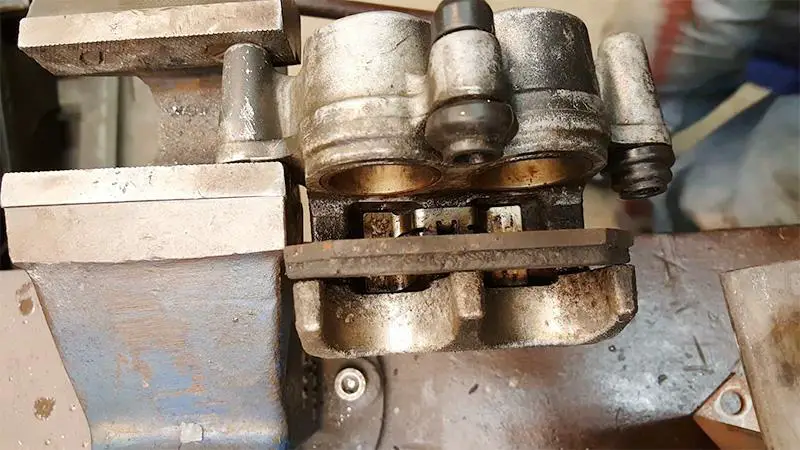
Contents
Understanding How Brake Calipers Work
In disc brakes, the caliper squeezes the pads against both sides of the rotor when the brake is applied. Each brake caliper receives hydraulic pressure from the master cylinder when the driver presses the brake pedal.
For the brakes to work, one or more pistons are pushed outward by fluid pressure inside the caliper. When it is released, a drop in hydraulic pressure leads to the calipers losing their grip on the brake pedal.
When pistons move, the square-cut seals around the caliper pistons deform, so when pressure is released, the seals want to revert to their original shape.
It allows the pads to kick back from the rotors by retracting the pistons slightly. Drum brakes require return springs, which are eliminated by this method.
Understanding Brake Caliper Pistons
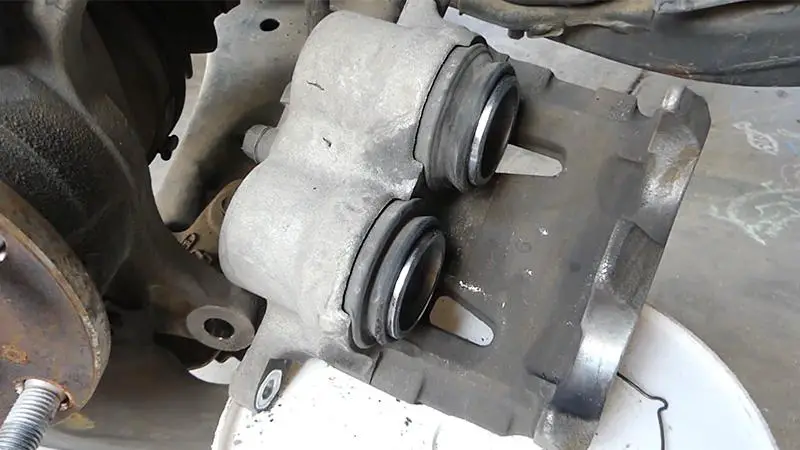
One or more pistons can be present in floating calipers, while multiple pistons are commonly found in fixed calipers. Fixed calipers have pistons on the rotor’s inner and outer sides (inner side, outer side).
By comparison, floating calipers have pistons on the inner side. A single-piston caliper usually has a large piston diameter, whereas the piston diameter is usually smaller in multi-piston calipers.
Multiple pistons allow longer brake pads in caliper housings, which is one of the benefits of using more than one piston. Moreover, multiple pistons provide more even braking (less pad distortion) due to the spreading of force across the back of the pad.
A multi-piston caliper is disadvantageous when one piston sticks, resulting in uneven pressure between the pads and rotor. Consequently, uneven pad wear can occur, and braking effectiveness (stopping distance) will be reduced.
There are three pistons used in calipers: aluminum, steel, and phenolic (plastic). The advantages and disadvantages of each type of piston are different. The aluminum piston is lightweight but prone to corrosion.
The aluminum pads heat the brake fluid inside the caliper, which can cause fluid boils and fades if the brakes run too hot. In addition to being the strongest type of piston, steel pistons are also susceptible to corrosion (rust), as are aluminum pistons.
The surface of steel pistons tends to be plated with nickel or chrome to make them more corrosion-resistant. As well as transmitting heat to the brake fluid, steel pistons conduct heat from the pads to the calipers.
When aluminum or steel pistons corrode, they may stick in the caliper, preventing the brakes from acting or releasing the brake after action. Pistons made of phenolic resin are lightweight and made from cast resin.
Incorrect manufacturing clearances may cause phenolic pistons to stick in their bore if they absorb moisture and swell. .
In calipers, phenolic pistons reduce heat transfer from the pads to the fluid due to their inability to conduct heat like metal pistons. In addition, it reduces the risk of brake fade and fluid boiling when the brakes get too hot.
Why The caliper Piston Won’t Retract Into Its Housing?
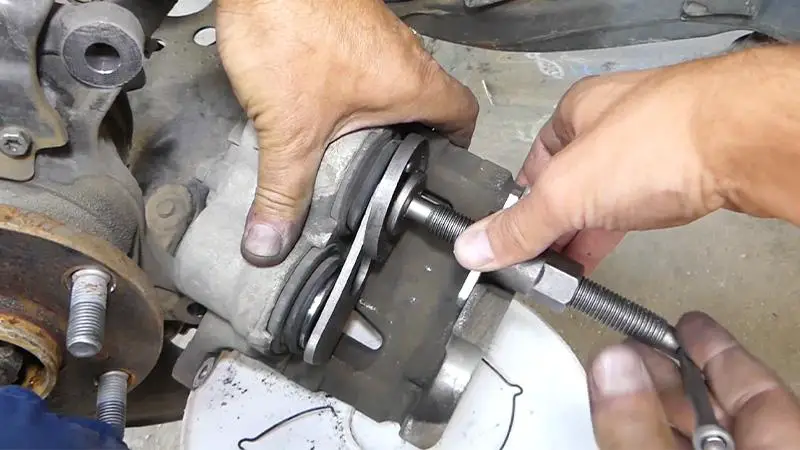
When caliper pistons are pushed into their housing, technicians can determine whether they are working correctly. It is assumed that caliper pistons are working properly if the pistons push in easily.
The situation is not always as straightforward as this. Ensure that the square cut seal is working on the caliper pistons if they perform correctly. Whenever the caliper piston retracts back into its housing, it is because of the square-cut seal.
There is no guarantee that the square-cut seal works merely because the piston can be manually pushed in. The square-cut seal is compromised when the brake pad wears rapidly, when the brake drags, or when there is a brake pull.
Damaged or broken square-cut seals prevent pistons from retracting back into their housings. As a result, even when the brake pedal is not engaged, the brake pads will continue to contact the rotor.
Repair Procedure:
The caliper piston must be operated to determine whether the square-cut seal is working. Checking this can be done in two ways. Neither method can be accomplished without an assistant’s help.
Manually Checking a Caliper Piston
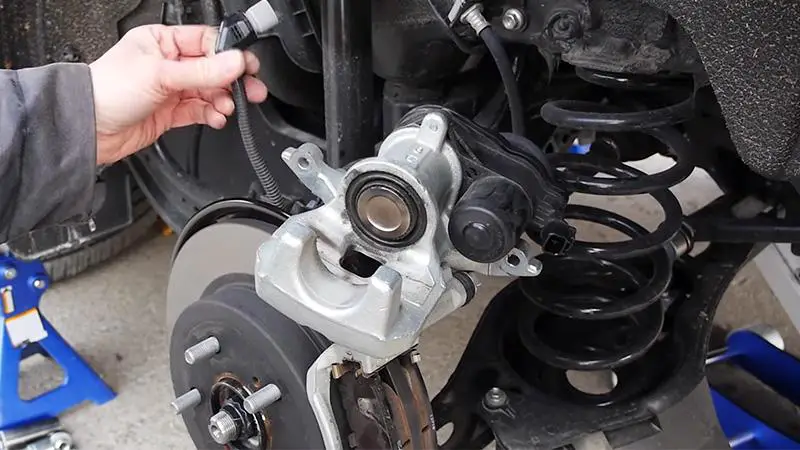
- Apply the brakes with the assistance of your assistant.
- Feel the brake pads against the rotor as the caliper piston is coming out of the housing
- Ask your assistant not to press the brake pedal.
- Watch the piston of the caliper retract into its housing as its retraction
Checking the Caliper Piston with a Dial Indicator
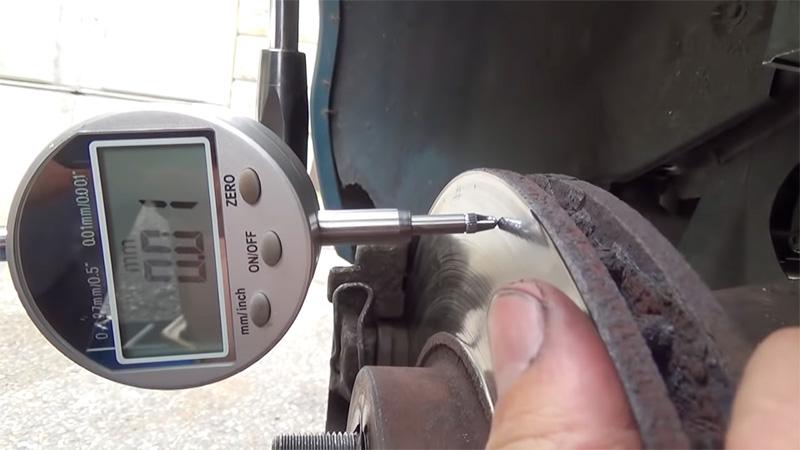
It is rare for this method to be used in a shop setting. In contrast, you can physically measure the caliper piston’s movement by attaching a dial indicator to it.
- Start by lightly pressing the brake pedal with your assistant. It is possible to pop the piston out of its housing by pressing the pedal down to the floor.
- Using the dial indicator, measure the piston movement until it reaches 10 to 15 thousandths of an mm
- Remove your assistant’s foot from the brake pedal.
- Measure how much the piston retracts. There will be a movement of 4 to 6 thousandths if the square cut seal is functioning correctly
When the caliper piston does not retract back into its housing during these tests, you know it has a compromised square-cut seal. If this is the case, the caliper must be replaced, or the O-ring seal must be replaced with a square cut.
Common Issues With Brake Calipers
There are various brake caliper problems, including leaky fluid caused by worn piston seals and uneven braking (pulling to one side when braking).
It usually occurs when the piston of the brake caliper sticks or when the caliper hangs up on its slides or bushings and drags (usually because of a stuck piston).
Rebuilding or replacing brake calipers is the only solution if your brake calipers are malfunctioning. Rather than attempting to rebuild an old caliper, it is usually best to replace them since replacing them is faster, easier, and more reliable.
To keep your brakes trouble-free for many more miles, you should also rebuild or replace high-mileage calipers when you serve them.
Final Words
When brake pads come into contact with brake discs, they slow the car because their pistons make contact with them. Therefore, they are an integral part of the braking system.
A brake caliper inflates when the brake pedal is pressed, pushing out behind the brake pads the pistons that fall behind the brake pads as brake fluid is forced through the master cylinder and down the brake pipes. As a result, the pads come into contact with the discs.
A drop in brake fluid pressure and the piston seals, which are returned to their uncompressed state when you step off the brake pedal, cause the pistons – and the brake pads – to retract.
A floating brake caliper and a fixed brake caliper both contain pistons. A floating caliper has one or two large-diameter pistons on the inboard side of the brake rotor. Upon activation, the piston(s) pull both brake pads towards the disc.
Both sides of the rotor on fixed calipers have small-diameter pistons, which provide more braking power. There are usually four or six pistons in each caliper. Cars of this type are most common today.
